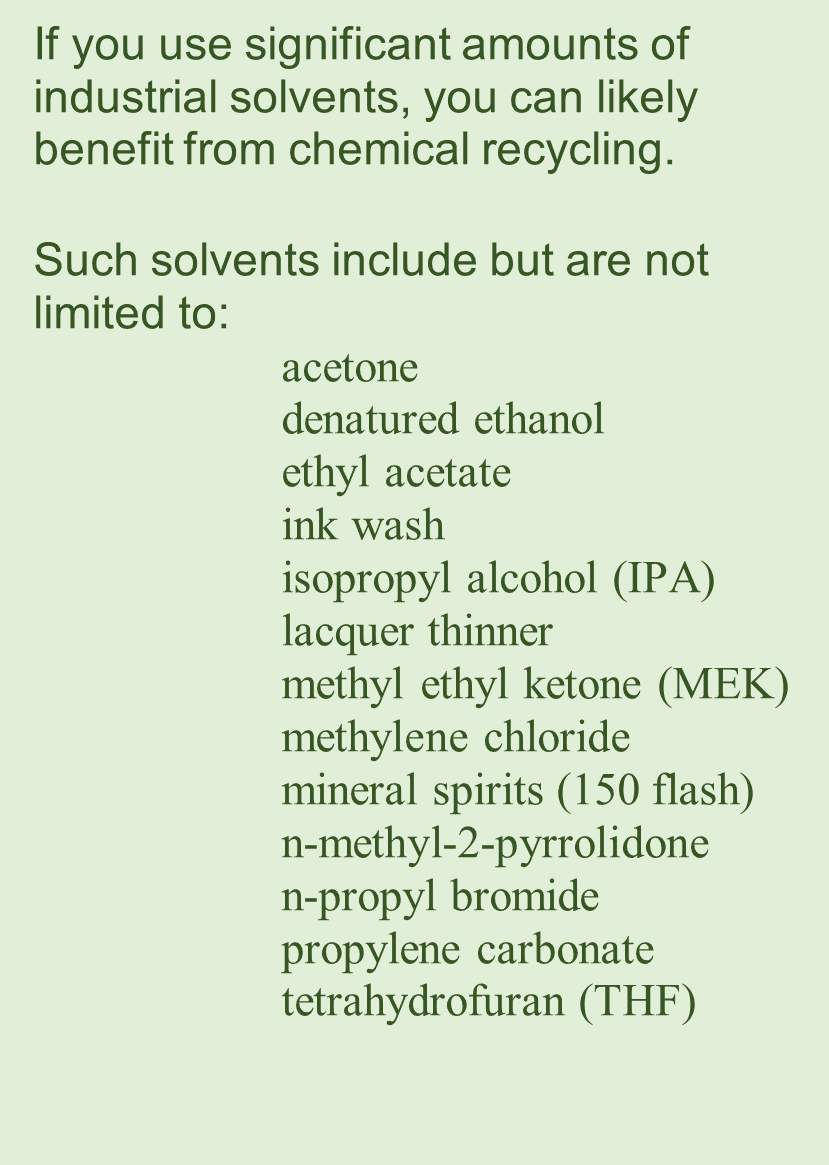Ways to Minimize Hazardous Waste for Reducing Your Generator Status
December 14, 2021
When it comes to hazardous waste, more is definitely not better. The more you generate, the more complicated and expensive your hazardous waste management becomes. So you have every incentive to reduce your hazardous waste streams.
The challenge, of course, is how.
How about buying less?
Hazardous waste can be a leftover virgin product that the EPA considers a listed or characteristic waste. It might sound pedestrian to simply advise, “buy less so you can throw away less.” But company silos and sandboxes often militate against this. 
If your waste managers are incentivized solely to minimize disposal costs, but your purchasing people are only motivated to ensure that there’s an abundance of chemical whatnot on-hand, your team is working at cross purposes.
For this reason, discussions about chemical waste reduction should include stakeholders across all your departments, stressing its comprehensive benefits, so that everyone appreciates its potential contribution to the corporate bottom line—and their bonuses.
(Yeah, we know: anything that smells of JIT inventory management is nowadays a hard sell; and copious stockpiling gives managers a warm & comfy feeling. But the supply chain won’t be broken forever. So start the conversation now.)
Still…you’re probably going to have some leftover chemicals. One idea: give them away. Post them on Craig’s List or some other e-board under Free Stuff. Churches, theater groups, charities, or your local housing authority might be happy for small quantities of usable paint or cleaning products. Also check out Habitat for Humanity.
Consolidate your waste streams
Consolidating the waste streams entering your accumulation areas is one obvious way to reduce your hazardous waste disposal costs. Consider:
- Combining compatible waste materials into larger shipping containers reduces the number of units you need to ship, lowering your handling and transportation outlays.
- The fewer containers you handle and transport, the fewer units there are to be inspected, which lowers your compliance liability (should one or more of them fail to meet regulatory guidelines).
Bear in mind, however, that waste stream consolidation is yet another area of hazardous waste management that demands expert consultation. This is because mixing one kind of waste haphazardly with another can generate dangerous chemical reactions—along with any number of applicable government fines and sanctions that will dwarf any potential savings you were hoping to achieve.
So if you don’t have an in-house chemist on board, and maybe even if you do, prudence demands expert consultation.
Think about recycling
One way to lessen the capital cost of hazardous waste management is to recycle the valuable constituents of such wastes for reuse, or blend them into fuel. Beyond the obvious economic benefit, recycling mitigates damage to the ecology by reducing the amount of materials requiring hazardous waste disposal; and fuel-blending has the added benefit of reducing fossil fuel consumption.
For example, a post-manufacture cleansing process that uses acetone will yield a hazardous waste that contains the spent acetone along with the solute it removed (e.g. electroplating residues such as chrome or cadmium). Recovering the acetone by distillation and using it again for the same process (or something akin) is a simple case of recycling for energy recovery.
Contrast this with “fuel-blending,” a process the EPA says is “an important option for reducing petroleum consumption.” Although the thermal energy of the acetone cannot be adequately salvaged in isolation, it burns more efficiently when mixed with other fuels (e.g. gasoline); and the combination can then be used to power one or another industrial process.
You are likely familiar with the idea of fuel-blending from experience at your local gasoline pump. For example, you find so-called E-10 almost everywhere, which is ten percent ethanol. E-85 is 85 percent ethanol. B-2 is five percent biodiesel. There are others—and they are known as “on-spec” for meeting the purity and proportional requirements specified by the EPA.
Try to reuse spent solvents
Saturated lacquer-thinners, acetones, chlorides, and other industrial solvents can be processed to render a percentage of their bulk into reusable product— typically as much as 80 percent. In the simplest scenario, these are returned to your facility for re-use in combination with their more-expensive virgin counterparts.
typically as much as 80 percent. In the simplest scenario, these are returned to your facility for re-use in combination with their more-expensive virgin counterparts.
Thereby, you can realize savings across the entirety of your operation by reducing your need for virgin solvent by 80 percent, commensurately decreasing your disposal and regulatory costs, even though you might be dedicating more funds to “hazardous waste management” per se.
Or another way to look at it: if you’re an LQG disposing of 1-million gallons of spent industrial solvent per month, recycling that waste so that you can reuse 80 percent of it will effectively cut your hazardous-waste stream to only 200-thousand gallons.
In the relatively rare cases where recycled solvents cannot be reused, there are hazardous waste management companies that can broker the recovered product for you. Thus, you still realize a monetary benefit relative to the cost of traditional hazardous waste removal.
Want to learn more? Get expert consultation.
The upshot
A well-executed hazmat reduction initiative makes sound economic sense. Lowering your generator status—e.g. from LQG to SQG—not only lessens the cost of your hazardous waste management, it enhances your environmental brand-image, which is no small thing in today’s eco-sensitive political & legal environment.
Also, you’re less likely to garner a wary eye from the EPA if your hazardous waste generation numbers are going down rather than up: something you’ll be directly questioned about in your 2022 Biennial Report.
Leveraging our decades of experience as hazardous waste experts, we can provide you with the best strategies & tactics for reducing your waste streams.
Don’t go it alone! Get expert advice.
And thank you for reading our blog!

